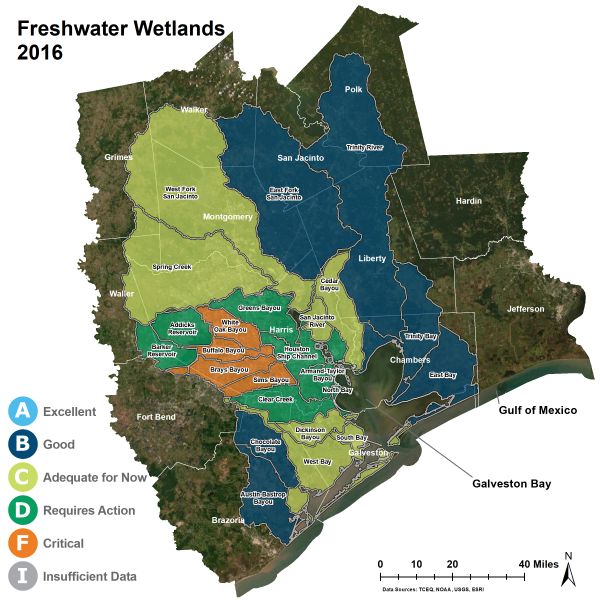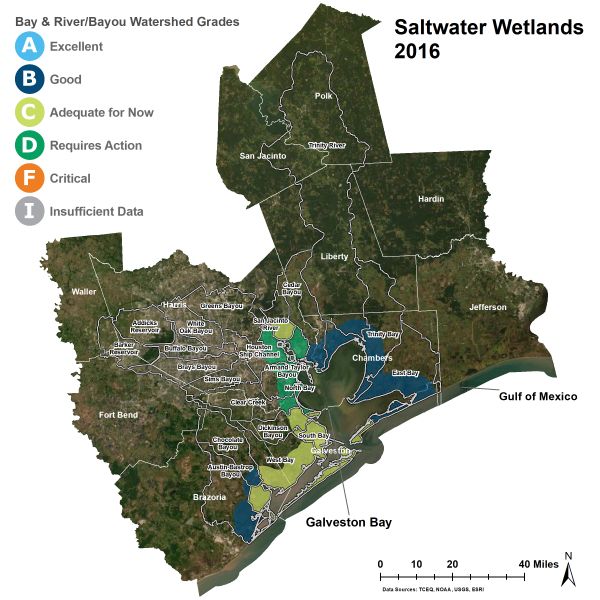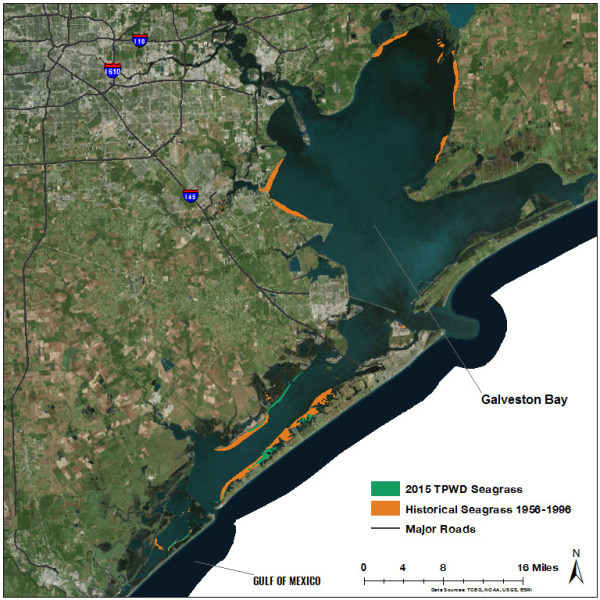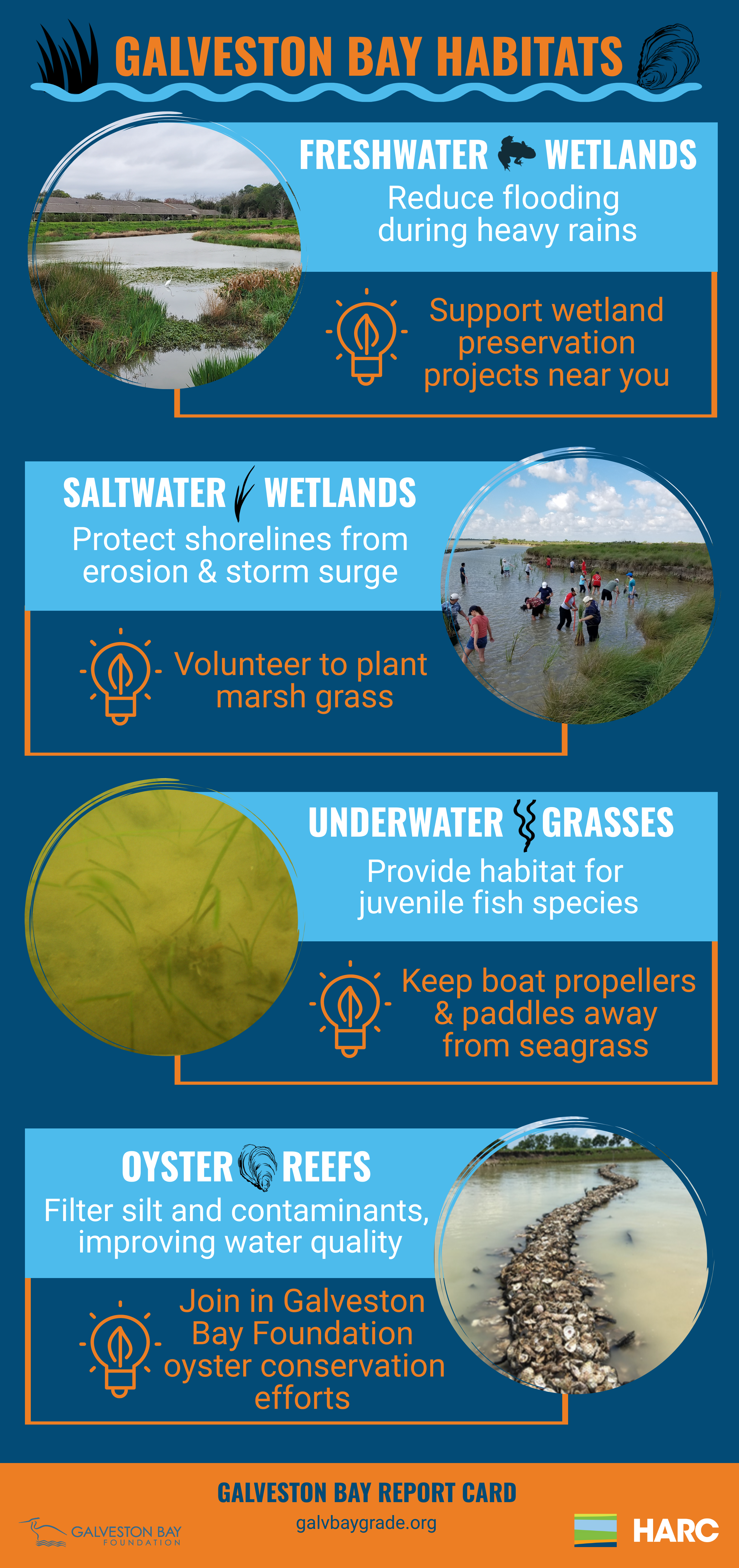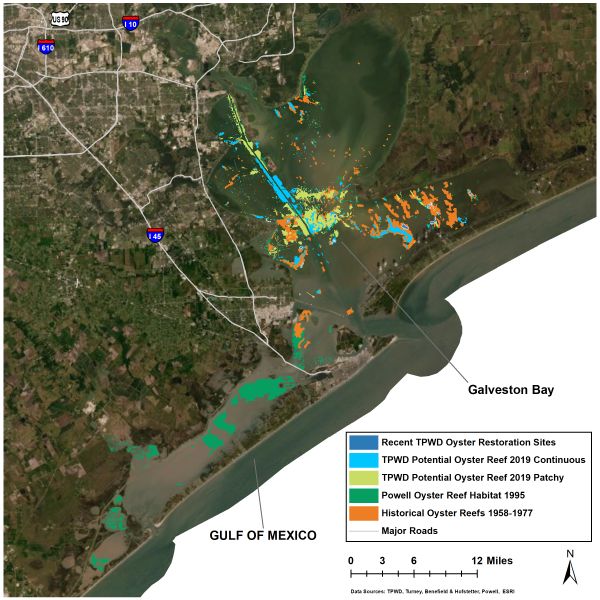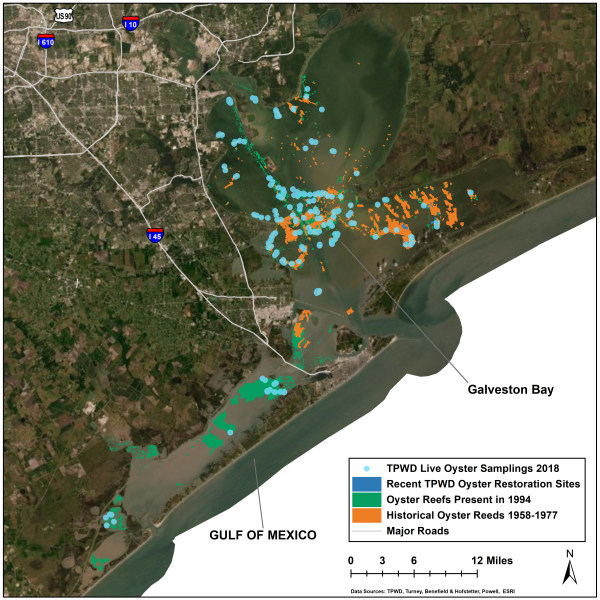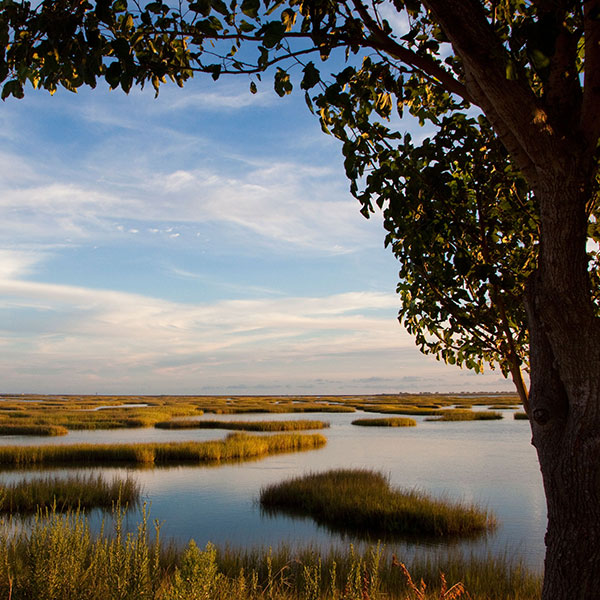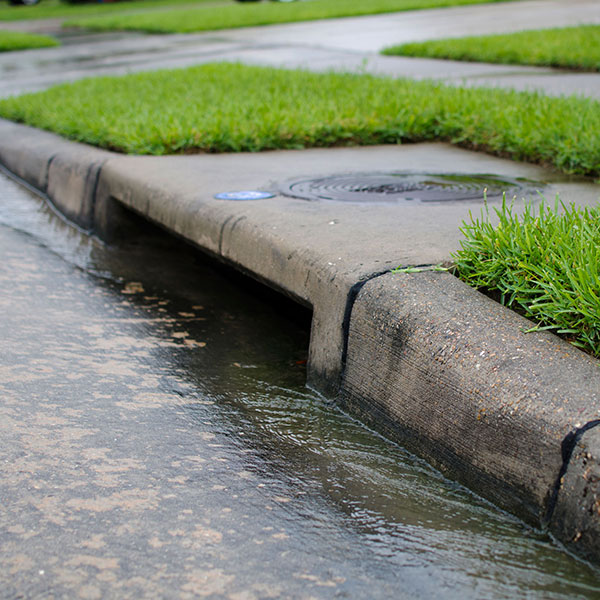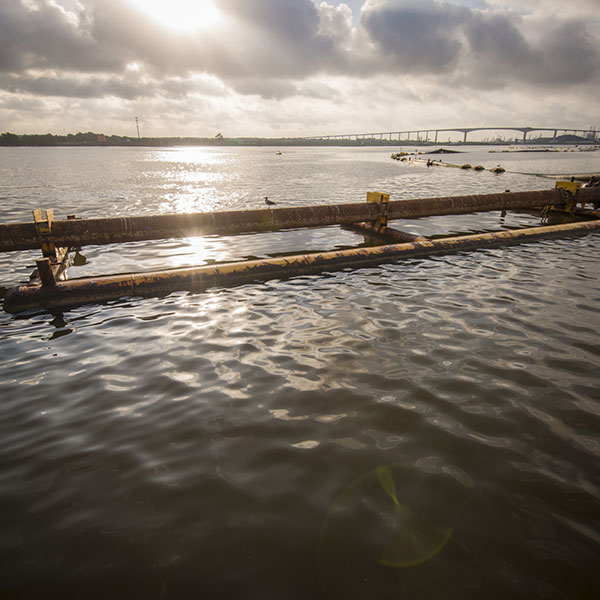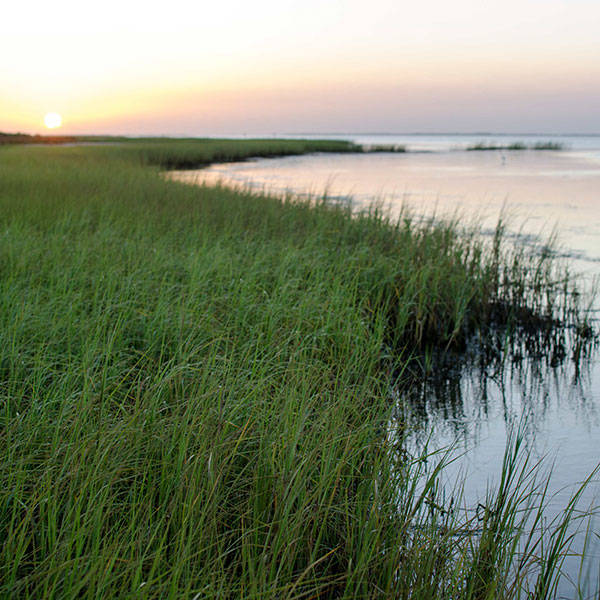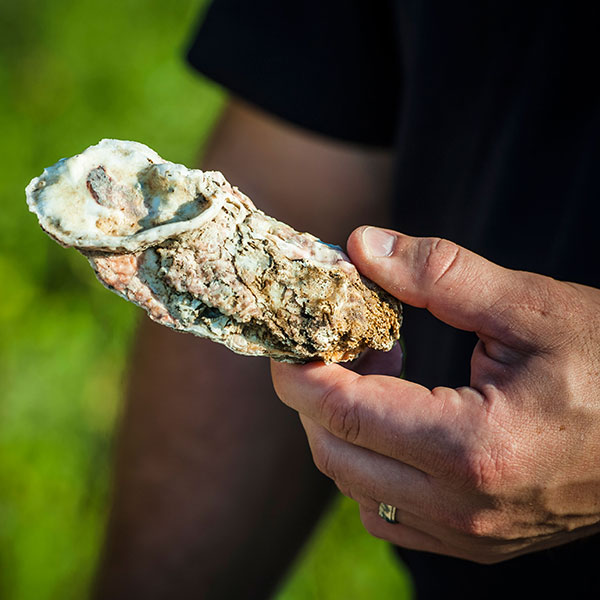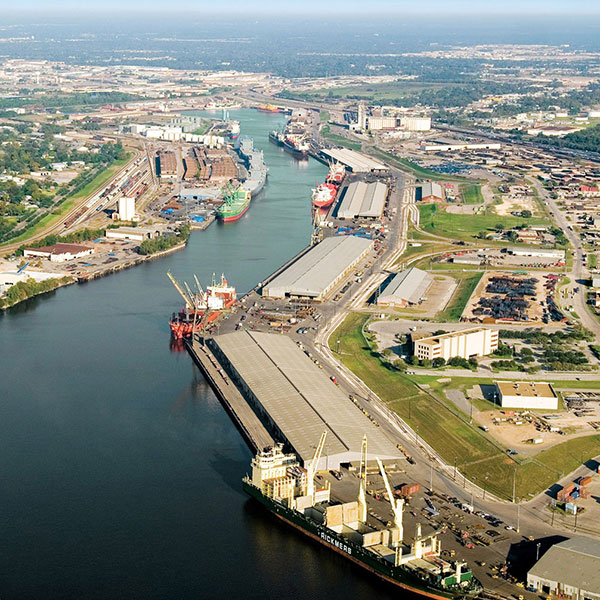The Bay hosts a variety of habitats that contributes to the biodiversity of the Houston-Galveston region. All of these habitats are vital to the ecological functions of the Bay. Currently, at least three of the four key coastal habitats assessed for the report card continue to be under stress, earning habitat a D overall: Freshwater Wetlands, Underwater Grasses, and Oyster Reefs. The good news is, Saltwater Wetlands are benefiting from the successes of regulatory protection and restoration efforts and appear to be maintaining. Also of concern is a general lack of updated, publicly available data describing habitats—particularly for wetlands and oyster reefs. These data are generated by public agencies and are necessary for the management, conservation, and restoration of these vital Bay habitats.
Habitat Summary
What We Can do
- Volunteer to restore habitat around the Bay by joining restoration organizations or events.
- Stay informed about proposed construction and dredging projects.
- Conserve land by donating it or establishing conservation easements.
Wetlands
Wetlands are often found at the transition between land and aquatic environments. They filter runoff, serve as a buffer for tides and storm surges, and reduce shoreline erosion. Saltwater wetlands are protected by the Clean Water Act and acreage of this wetland type has increased slightly as of 2016. Many freshwater wetlands remain largely unprotected from development and are disappearing at a greater rate than they are being preserved or restored. The ability to track losses and gains in the acreage of our region’s wetlands is vital to their protection and preservation of the ecosystem services they provide. In 2020, NOAA released the 2016 C-CAP dataset as well as enhanced previously released 1996, 2001, 2006 and 2011 datasets. For the 2020 grades, change from freshwater and estuarine wetland classes to developed land cover (residential, commercial, and industrial development) between 1996 and 2016 was used to calculate percent of wetland loss. Percentage of wetlands lost to development and percentage of developed land in the subwatershed were averaged to come up with a composite wetland loss grade for each subwatershed. The wetland grades will be updated as soon as the latest C-CAP wetland data are available.
What We Can do
Choose Conservation
- Learn more about the benefits of wetlands, including how wetlands fight flooding in Houston, on HARC’s blog.
- Join a wetland restoration effort.
- Stay informed about development projects that threaten wetlands.
Overall Saltwater Wetlands
Overall Freshwater Wetlands
Underwater Grasses
Underwater grasses grow in shallow, clear water where light can penetrate and allow the grass to perform photosynthesis. Underwater grasses provide an important habitat for juvenile species of fish and shellfish. Despite some areas of recovery, the amount of seagrass in the Bay has been significantly reduced by poor water clarity, salinity changes, sea level rise and subsidence. Underwater, or seagrass, beds have been restored successfully in West Bay, but are still absent from much of Galveston Bay where they once provided valuable habitat. The 1996 Galveston Bay Plan restoration goal of 1,400 acres has been achieved, but acreage is still far below historical coverage. We hope that ongoing restoration efforts and improving water quality will continue to increase seagrass habitat.
What We Can do
Keep the Water Clear
- Prevent nutrient pollution by using rain barrels, picking up after your pets, and following fertilizer directions carefully.
- Be a responsible boater and never allow propellers or paddles to come into contact with seagrass beds.
- Speak up for responsible dredging practices.
Overall Underwater Grasses
Oyster Reefs
Oysters filter silt and contaminants from Galveston Bay, improving water quality and clarity. Oysters are also an important fishery. The Bay’s oyster reefs, home to the oysters and a variety of other animals, have significantly declined over time due to the historical overharvesting of oyster shells, the damaging storm surge of Hurricane Ike in 2008, drought, fishing pressure, and disease. Although we know that oyster reefs are under stress, available oyster reef data is still being processed, and the current status of the habitat cannot be evaluated. As a result, the grade for oyster reefs is I for Incomplete. However, preliminary data on potential oyster reef habitat has been added to the left-hand map. The new TPWD data identify areas of potential reef habitat: either solid reef or unconsolidated shelly substrate. Ground truthing for accuracy assessment has not yet been completed. At this time, West Bay data are not yet available. The right-hand map below shows where TPWD samples for oysters. Oyster populations are included in the wildlife grade for shellfish.
What We Can do
Fight for the Filters
- Volunteer to rebuild oyster reefs, or help oyster populations through the oyster gardening program for waterfront property owners.
- Speak with your favorite restaurant about shell recycling.
- Learn more about oyster reef habitat from the National Oceanic and Atmospheric Administration.
Overall Oyster Reefs
